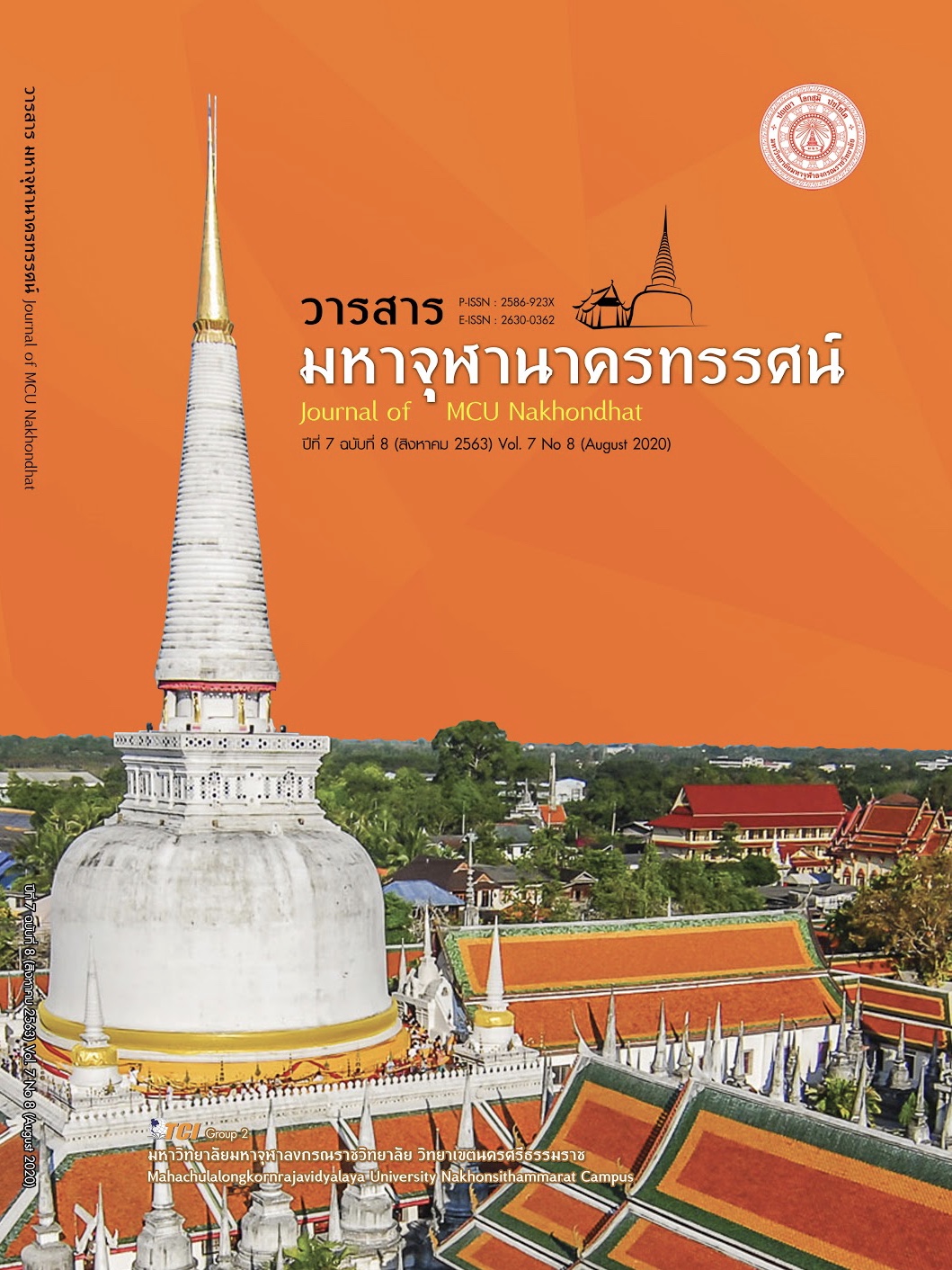A MANAGEMENT MODEL FOR DIVING SPORT TOURISM CORESPONDS TO LOCAL COMMUNITY SUSTAINABILITY
Main Article Content
Abstract
This academic article was to aims to propose a model for sport diving based on the concept of sustainable tourism of local communities. The model includes sport diving following the principles of management (POLC), using the Modify Delphi technique which studying the documents, interviewing, simulating the model and confirming the model by group discussion from experts. As for planning, natural resources and environmental management, human resource management, service development and marketing, participatory community – based tourism development, and activities to promote tourism are five elements. As for organizing, 10 offices and individuals should be involved. The Department of Tourism is responsible for designing campaigns. The Department of National Park, Wildlife and Plant Conservation supervises tourism activities. The Office of Tourism develops people’s skills. The Rescure Unit, marine police, provincial police and the Subdistrict Administration Organization (SAO) ensure safety. The Marine Department check boats. Tourist police check tourist guides. The Provincial Administration Organization (PAO) and tourism businesses provide facilities. The SAO collaborates with hospitals to provide health services to tourists. The tourism networks in communities establish a service standard. Tour guides and dive instructors design activities and ensure their customers obey rules about natural resource. As for leading, 13 elements are vital. Budgets, staffs and equipment should be provided. Suitable entrance fees should be set for conservation. Lawmaking and enforcement should be imposed. New curricula should be provided for locals. Urban planning should be devised. Transport to communities should be provided for tourists. Tourism mechanism should be established for communities’ access. An agreement on resource use and conservation should be reached. Related laws, standards and practices should be introduced to involved sectors to ensure their understanding. Public hearing on resource use should be conducted. Assembling of tourism groups should be promoted. Standard services and equipment should be provided. Tour guides should be present in diving activities. As for controlling, seven elements are required: opening and closing the tourist season; setting dive sites; limiting the number of tourists; setting up buoys; enforcing laws; maintaining standard services; managing community enterprise.
Article Details
References
กระทรวงการท่องเที่ยวและกีฬา. (2562). โครงการเพื่อการส่งเสริมการท่องเที่ยวอย่างยั่งยืน. ใน รายงานการวิจัย. สถาบันบัณฑิตพัฒนบริหารศาสตร์.
. (2562). การสัมมนาแนวทางการขับเคลื่อนการท่องเที่ยวเพื่อพัฒนาเศรษฐกิจจังหวัดสตูล. เรียกใช้เมื่อ 25 เมษายน 2562 จาก http://thainews.prd.go.th
คณะอนุกรรมการจัดทำแผนพัฒนาจังหวัดสตูล. (2563). การวิเคราะห์สภาวะแวดล้อม. เรียกใช้เมื่อ 25 เมษายน 2563 จาก http://www.harvardasia.co.th/wp–content/ uploads/2019/09/stunplan.pdf
นงนภัส คู่วรัญญู เที่ยงกมล. (2554). การวิจัยเชิงบูรณาการแบบองค์รวม. กรุงเทพมหานคร: สำนักพิมพ์แห่งจุฬาลงกรณ์มหาวิทยาลัย.
บริษัท แบรนด์ แมทริก รีเสิร์ช จำกัด. (2554). โครงการศึกษาสถานการณ์และแนวโน้มด้านการตลาดสำหรับการท่องเที่ยวกลุ่มดำน้ำ. ใน รายงานการวิจัย. การท่องเที่ยวแห่งประเทศไทย.
ภาสิณี วรชนะนันท์ และคณะ. (2555). การศึกษาการพัฒนาแหล่งดำน้ำและแนวปฏิบัติที่ดีสำหรับการท่องเที่ยวดำน้ำในเขตพัทยา. ใน รายงานการวิจัย. สถาบันวิจัยและพัฒนาแห่งมหาวิทยาลัยเกษตรศาสตร์.
วรวินทุ์ สุวัณ ณ เขมรัฐ และคณะ. (2547). ศักยภาพของทรัพยากรการท่องเที่ยวเชิงกีฬาของจังหวัดภูเก็ต พังงา กระบี่. ใน รายงานการวิจัย. สำนักงานคณะกรรมการส่งเสริมวิทยาศาสตร์ วิจัยและนวัตกรรม.
ศรัณพร ชวนเกริกกุล. (2561). กลยุทธ์การยกระดับการตลาดท่องเที่ยวเชิงวัตฒนธรรมเมืองรองจังหวัดสิงห์บุรี. ใน ดุษฎีนิพนธ์ปรัชญาดุษฎีบัณฑิต สาขาการตลาด. มหาวิทยาลัยสยาม.
สำนักงานปลัดกระทรวงการท่องเที่ยวและกีฬา. (2558). รายงานสภาวะเศรษฐกิจท่องเที่ยว. เรียกใช้เมื่อ 25 เมษายน 2563 จาก https://www.mots.go.th/ewt_dl_link .php?nid=7533


